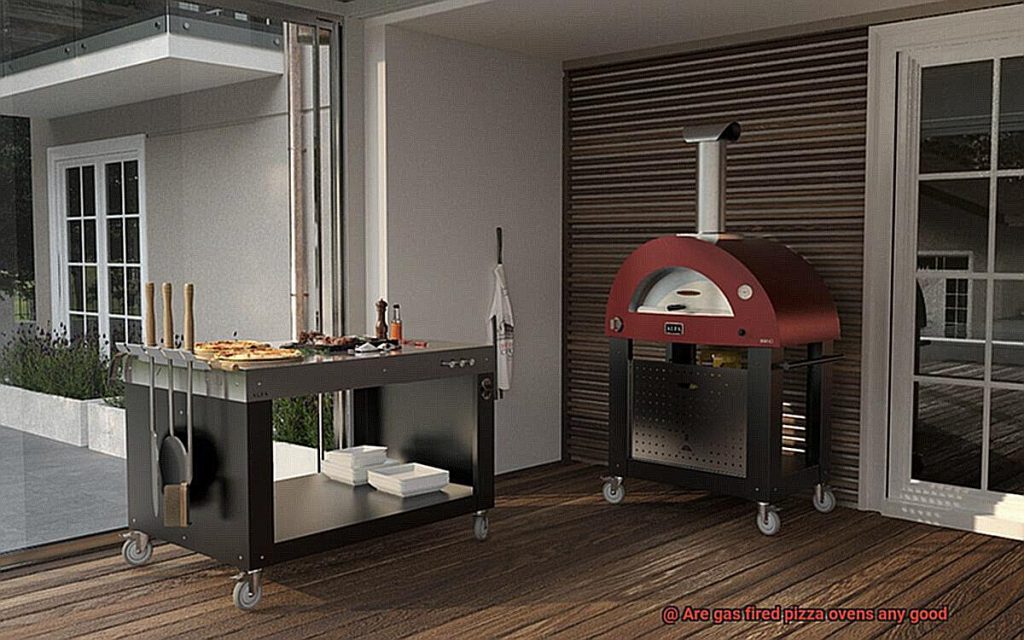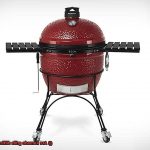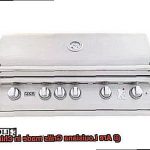Pizza lovers, unite. There’s nothing quite like sinking your teeth into a delicious slice of pizza with that perfect crispy crust. With so many options out there, it can be tough to decide which pizza oven is the right fit for you. One option that’s been gaining traction lately is the gas-fired pizza oven. But are they worth the hype?
Convenience is king when it comes to gas-fired ovens. They heat up quickly and are easy to use, making them ideal for busy restaurants or home cooks who don’t want to fuss with complicated setups. Plus, compared to traditional wood-fired ovens, gas ovens are more energy-efficient – meaning you’ll save some dough on your energy bill.
But what about taste? Can a gas-fired oven really deliver that same smoky flavor we all know and love from wood-fired ovens? Absolutely. Many gas ovens use lava rocks or ceramic stones to mimic the heat and flame of a traditional wood-fired oven, resulting in a mouth-watering pizza that’s just as good (if not better) than its wood-fired counterpart.
In this blog post, we’ll explore the pros and cons of gas-fired pizza ovens in depth, compare them to other types of ovens on the market, and help you determine if a gas-fired oven is right for your needs. Get ready to become a true pizza connoisseur – one delicious slice at a time.
Contents
Advantages of Gas-Fired Pizza Ovens
Look no further than a gas-fired pizza oven. Gas ovens have several advantages over wood-fired ovens that make them the perfect choice for both home and commercial use.
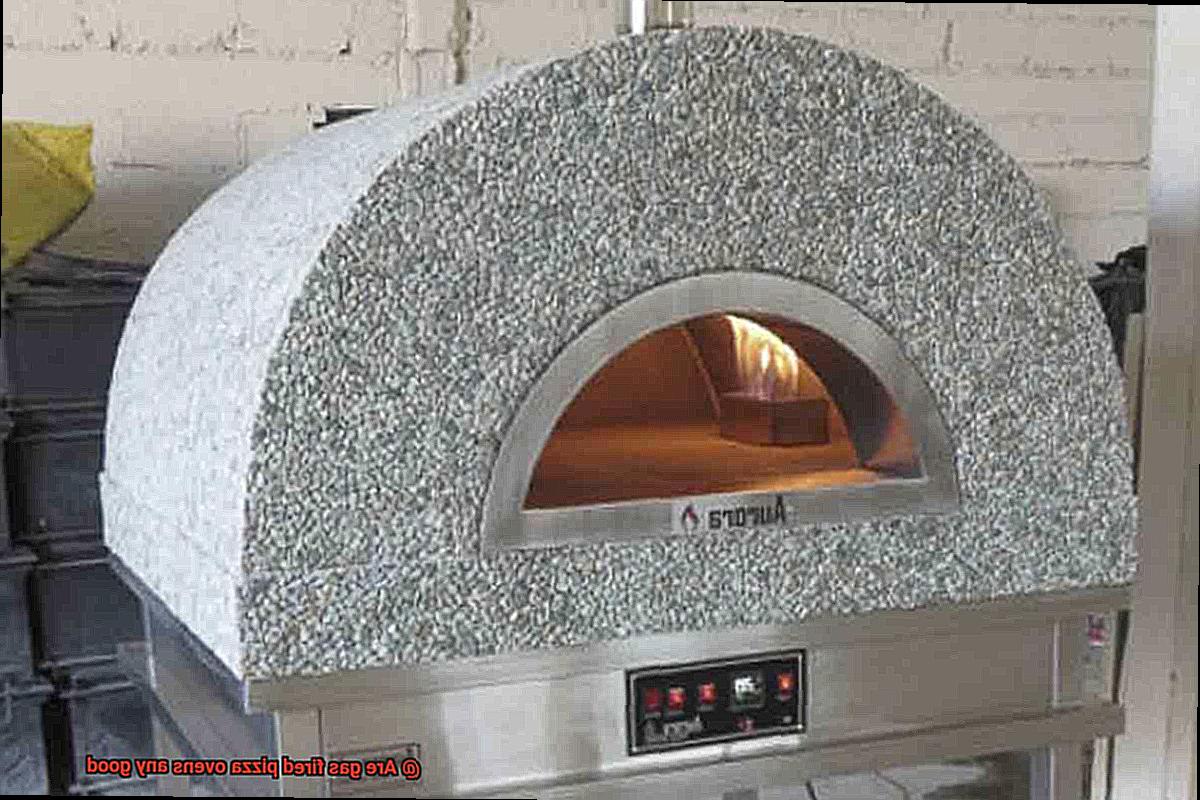
The first and most apparent advantage of a gas-fired pizza oven is the convenience it offers. With just a push of a button, you can turn on the oven and start cooking pizzas instantly. Say goodbye to the tedious process of building and maintaining a fire in a wood-fired oven. With gas, you can start cooking your pizzas right away.
Another significant advantage of gas ovens is their exceptional temperature control. Wood-fired ovens can be difficult to control, resulting in unevenly cooked pizzas. On the other hand, gas-fired ovens allow you to adjust the temperature quickly and easily with a thermostat, ensuring that your pizzas are cooked evenly every time. This feature is especially useful for commercial kitchens where consistency is crucial.
Gas-fired pizza ovens are also much cleaner than wood-fired ovens. Wood produces ash and smoke, which can create a mess and be challenging to clean up. Gas ovens, however, produce no ash or smoke, making them much easier to maintain and keep clean.
Furthermore, using a gas-fired pizza oven is an environmentally friendly choice. Burning wood releases harmful pollutants into the air, contributing to air pollution and climate change. In contrast, gas ovens produce significantly lower emissions and are therefore more sustainable.
While some people argue that wood-fired ovens produce better flavor, many prefer the taste of gas-fired pizzas due to their smoky flavor. Modern gas ovens are designed to mimic the unique taste produced by wood-fired ovens.
Ease of Use
One of the primary benefits of using a gas-fired pizza oven is its simplicity. With just a push of a button, you can ignite the flame and start cooking your pizzas immediately. Unlike traditional wood-fired ovens that require significant skill and expertise to operate effectively, gas-fired ovens are incredibly easy to use.
Moreover, gas-fired ovens provide consistent heat throughout the cooking process, which means you can cook your pizzas to perfection every time without any guesswork or trial and error. You won’t have to worry about constantly monitoring the temperature or adjusting the fire, as you would with traditional wood-fired ovens.
In addition to being easy to use and providing consistent heat, gas-fired pizza ovens also offer excellent versatility. With a gas-fired oven, you can cook a wide variety of dishes in addition to pizza. Whether you want to roast vegetables, bake bread or grill meats, a gas-fired oven can handle it all with ease.
Consistent Heat Output
Look no further than a gas-fired pizza oven with consistent heat output.
Maintaining a consistent temperature throughout the cooking process is crucial for achieving that crispy crust and perfectly melted cheese that we all crave. Uneven heat distribution can result in burnt or undercooked spots on your pizza, ruining the whole experience.
Luckily, gas-fired ovens can reach high temperatures quickly, allowing you to cook your pizza faster than ever before. However, not all gas-fired pizza ovens are created equal. It’s important to choose a model with good insulation and high-quality burners to ensure consistent heat output and evenly cooked pizzas every time.
But why stop there? Take your pizza game to the next level with digital temperature control. This advanced feature allows you to monitor and adjust the temperature as needed, giving you ultimate control over your cooking process.
To recap, here are some key factors to consider when shopping for a gas-fired pizza oven with consistent heat output:
- Good insulation and high-quality burners
- Digital temperature control for precision cooking
- Quick preheating times for faster cooking
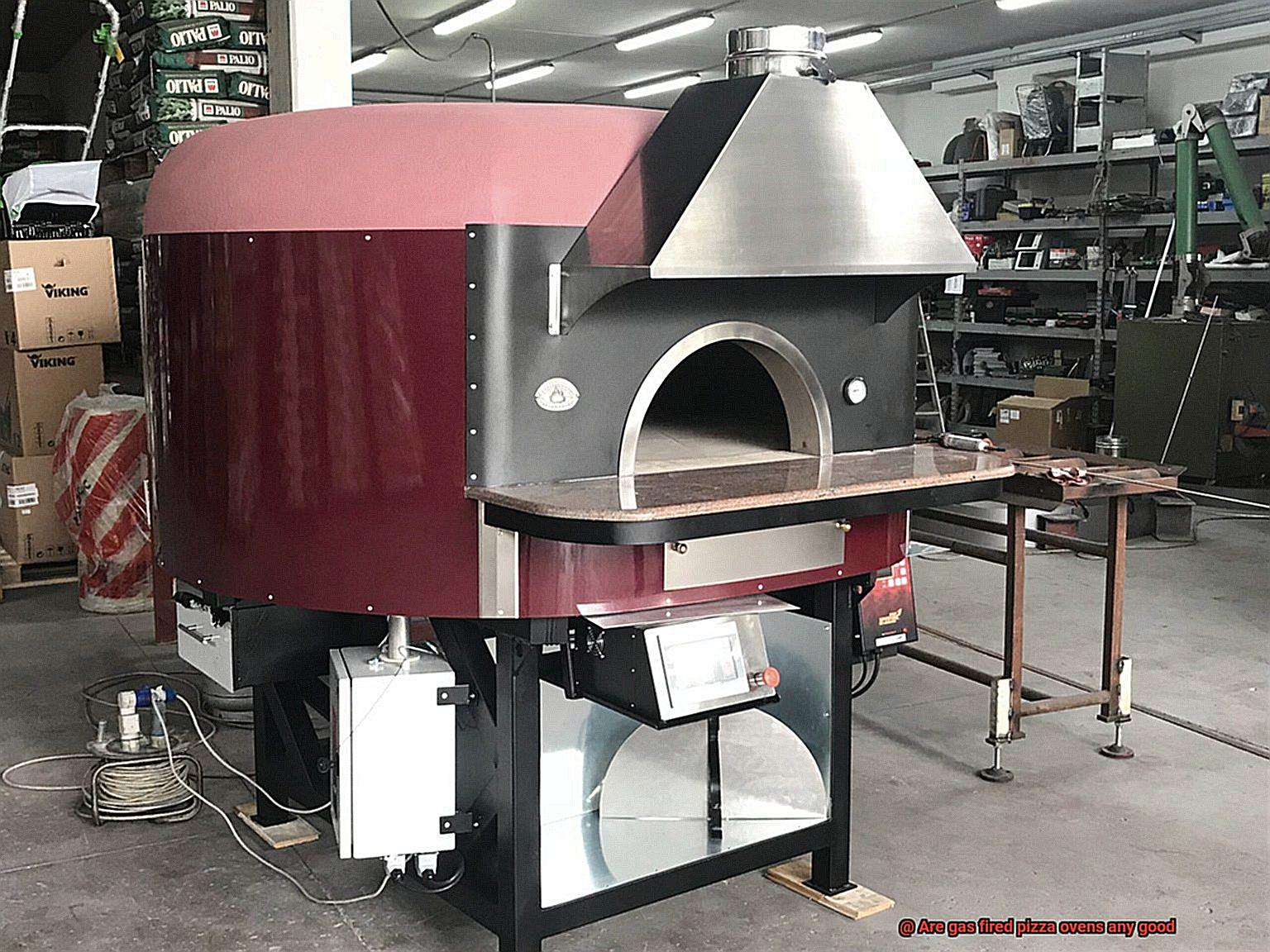
Flavor Comparison to Wood-Fired Ovens
The debate is fierce in the pizza world, but let’s break it down to understand the nuances.
First, it’s important to note that the type of fuel used does impact the flavor of the pizza. Wood-fired ovens use wood as fuel, which produces a unique smoky flavor that can be difficult to replicate with gas. However, gas-fired ovens have their own advantages.
One advantage of gas-fired ovens is consistency. Because they are fueled by gas, the temperature can be easily controlled and maintained. This means that pizzas will cook evenly and consistently every time, which can be challenging to achieve with wood-fired ovens. Additionally, gas-fired ovens are much easier to use and require less maintenance than their wood-fired counterparts; there is no need to constantly add wood or monitor the fire.
But let’s not forget about personal preference. The flavor comparison between gas-fired and wood-fired pizzas largely depends on individual tastes or the specific type of pizza being made. For instance, Neapolitan pizzas are traditionally cooked in wood-fired ovens and may not taste quite the same in a gas-fired oven.
Ultimately, it comes down to what is more important to you – authenticity or convenience? While wood-fired ovens may produce a more unique and distinct flavor, gas-fired ovens can still produce delicious pizzas with consistent results. With the right equipment and technique, you can achieve mouthwatering pizzas that will make your taste buds sing.
Cost Considerations
Before making the purchase, it’s important to consider the cost implications of this decision. As an expert in this field, I can guide you through the different cost considerations and help you make an informed decision.
Firstly, let’s talk about the initial purchase price. Gas-fired pizza ovens come in a range of sizes, features and brands, which translates to a wide range of prices from a few hundred dollars to several thousand dollars. While gas ovens may be more expensive than traditional charcoal or wood-fired ovens, they are generally less expensive than electric ovens. It’s important to consider the features you need and weigh them against the initial purchase price to make an informed decision.
Next, we have installation and maintenance costs. Gas ovens require a gas line to be installed, which can add to the overall cost of the oven. However, once installed, gas ovens are relatively low-maintenance and easy to clean compared to wood-fired ovens. This means that you won’t have to spend as much time or money on upkeep in the long run. It’s important to factor in these costs before making a purchase.
Another cost consideration is the ongoing fuel costs associated with using a gas fired pizza oven. While gas may be cheaper than electricity or wood, it is still an ongoing cost that should be factored into the overall cost of using the oven. However, because gas ovens are energy-efficient, they tend to have lower operating costs over time. It’s important to consider these ongoing costs and how they will affect your budget over time.
In summary, when considering the cost of a gas-fired pizza oven, it’s important to weigh all these factors against the convenience and efficiency of using a gas-powered oven. Some additional cost considerations may include:
- The cost of accessories and additional features that you may want to add on.
- The cost of repair or replacement in case of damage or malfunction.
- The cost of professional installation if you’re not comfortable doing it yourself.
Maintenance Requirements
That’s why proper maintenance is crucial to keep your oven running smoothly and efficiently. Here are some essential maintenance requirements to keep in mind.
First and foremost, regular cleaning is essential. After each use, take the time to wipe down the interior of the oven to remove any leftover food or debris. Periodically deep-clean the oven with a degreaser to keep it in top shape. Trust us, your taste buds will thank you for it.
In addition to cleaning, it’s important to check your oven’s parts regularly and replace any worn or damaged ones as needed. This includes burners and igniters, which can wear out over time and cause issues with temperature regulation.
To ensure safe operation and catch any potential issues before they turn into major problems, have your oven inspected and maintained by a licensed professional on a regular basis. This is especially important for gas-fired ovens, as they can pose safety risks if not properly maintained.
The good news is that gas-fired pizza ovens generally require less maintenance than wood-fired ovens. Unlike wood-fired ovens, there’s no need to constantly monitor and add wood to maintain the desired temperature, which can save both time and effort.
Of course, the specific maintenance requirements of your oven may vary depending on the model and usage frequency. Always consult the manufacturer’s instructions for recommended maintenance procedures and schedules to ensure that you’re taking care of your investment properly.
Safety Considerations
It’s important to prioritize safety when using these ovens, as they can reach extremely high temperatures and pose potential hazards if not used correctly.
To ensure optimal safety, it’s crucial to follow all safety guidelines provided by the manufacturer. Here are some key considerations to keep in mind:
- Proper installation and connection of the gas supply: Gas leaks can be extremely dangerous and can result in fires or explosions. Therefore, hiring a professional to install the gas line is highly recommended, and regular inspections should be conducted to detect any leaks.
- Choosing an oven made from durable materials: The material of the oven is also a critical factor in safety considerations. It’s important to select an oven made from durable materials such as stainless steel or cast iron that can withstand high temperatures without cracking or breaking.
- Using proper protective gear: When handling hot items from the oven, such as pizza stones or trays, it’s essential to use proper protective gear such as oven mitts or gloves to prevent burns. Safety should always come first.
- Keeping children and pets away from the oven during use: It’s crucial to keep curious little ones and furry friends at a safe distance from the oven while it’s in use. The high temperatures can pose a serious danger to them.
7Y7G71x-9Dw” >
Conclusion
In conclusion, gas-fired pizza ovens are a top-notch choice for those who crave convenience, consistency, and energy efficiency. Unlike traditional wood-fired ovens that require time-consuming setup and maintenance, gas ovens heat up quickly and are easy to use, making them perfect for busy restaurants or home cooks on the go. They also offer exceptional temperature control, guaranteeing that every pie comes out perfectly cooked each time. For commercial kitchens where consistency is key, gas-fired ovens are a no-brainer.
Some argue that wood-fired ovens produce superior flavor due to the unique smoky taste produced by burning wood. However, many pizza enthusiasts prefer the smoky flavor of gas-fired pizzas. Modern gas ovens are designed to mimic the distinct taste of wood-fired pies while providing additional benefits like cleaner emissions and greater environmental friendliness.
Before investing in a gas-fired pizza oven, it’s important to consider all costs associated with it such as initial purchase price, installation costs, ongoing fuel expenses, and maintenance fees. Proper upkeep is crucial in keeping your oven running smoothly and efficiently.
Regular cleaning after each use and routine checks on parts will ensure your oven lasts for years to come. Always prioritize safety when using these powerful appliances by following manufacturer guidelines.
In short, gas-fired pizza ovens provide a hassle-free way to enjoy delicious pizzas with consistent results every time.

